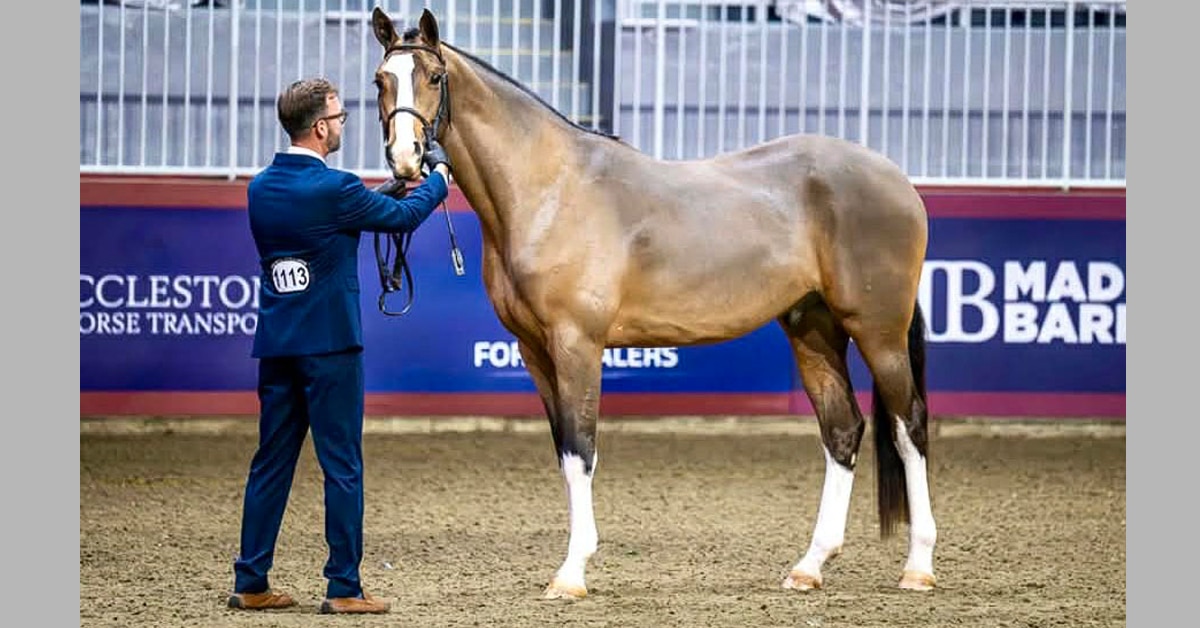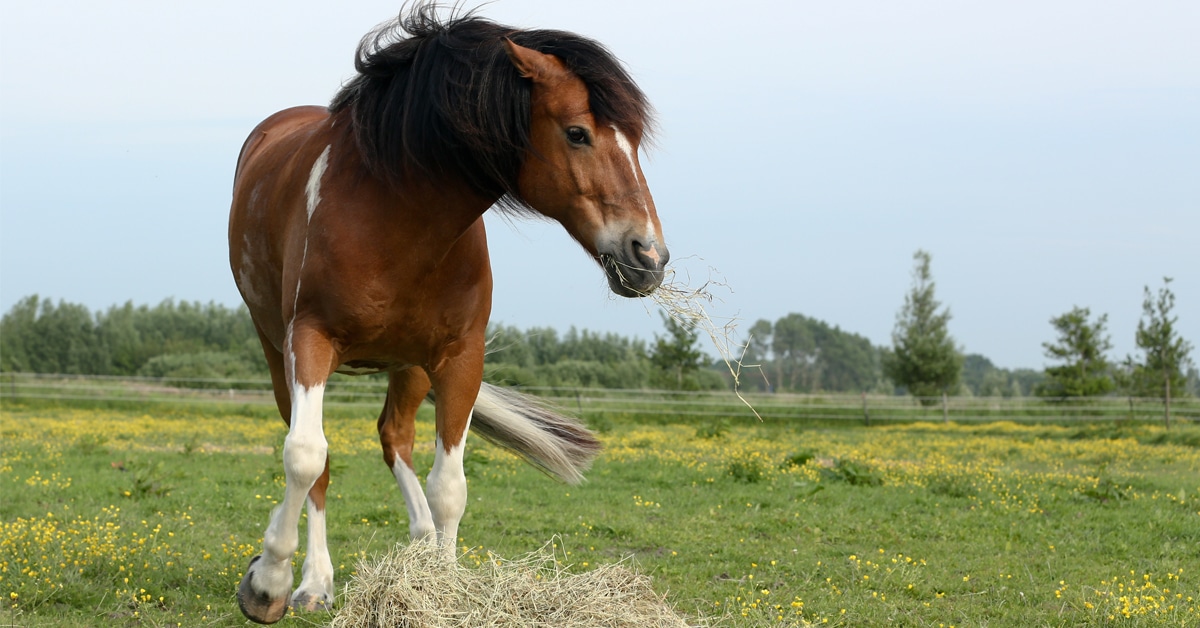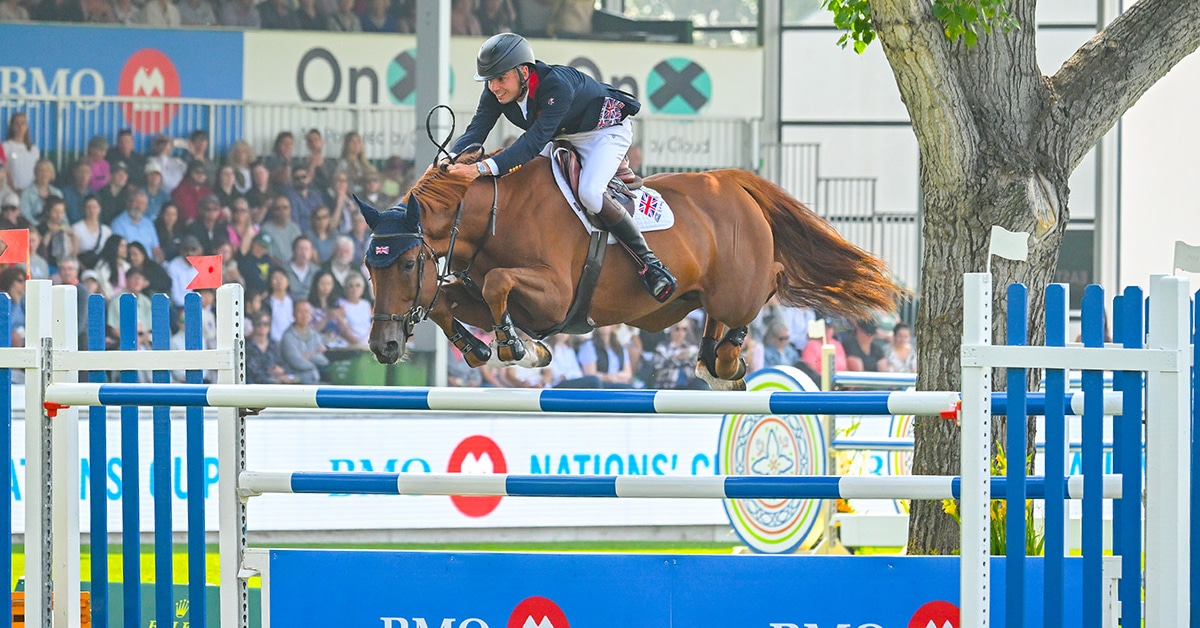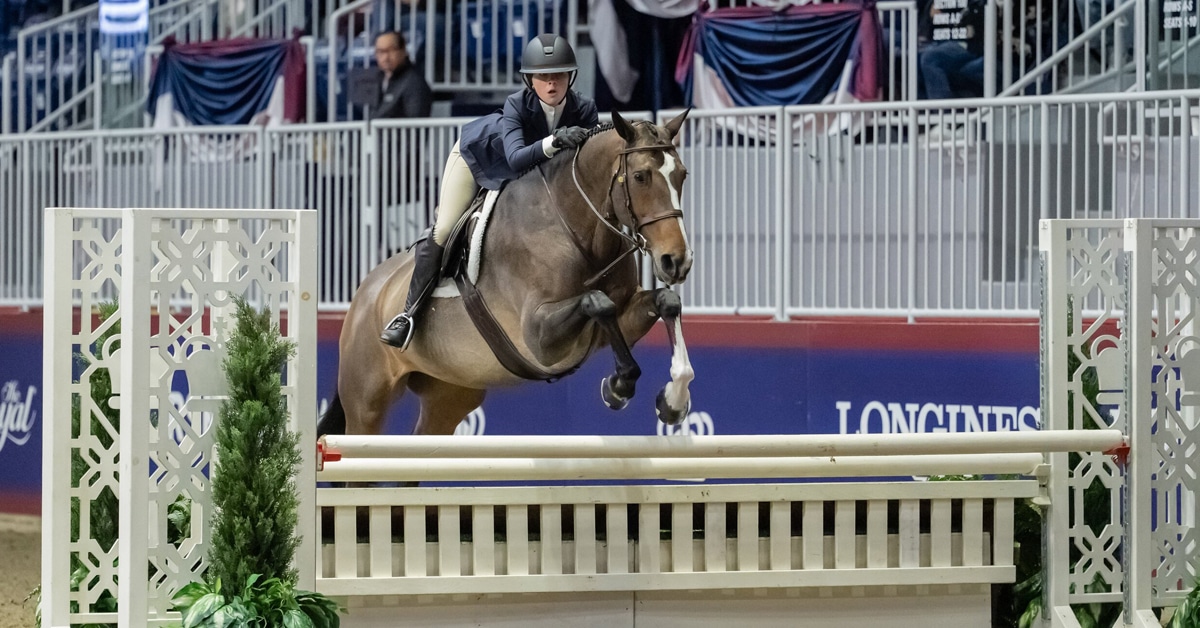Equine nutritionist Shannon Pratt-Phillips, Ph.D. explores the truths and misconceptions behind some common beliefs and myths around feeding horses.
Myth 1: My horse’s concentrate (grain mix) is the most important part of his diet.
The most important part of the horse’s diet is water, followed by forage. Forages such as hay or pasture are what the horse’s digestive tract was designed for. Good-quality hay or pasture can provide the horse with almost all of the nutrients he needs. By offering ample forage, your horse can easily meet his calorie, protein, calcium, phosphorus, potassium, magnesium, iron, and vitamin needs. The only nutrients that are typically low in forages are sodium and potentially selenium (depending on when and where it was grown). A trace mineral salt block can make up for these deficiencies. If your hay has been stored for more than six months, it may be low in vitamins A and E and your horse might need those supplemented.
Concentrated feeds are designed to provide calories for the horse along with supplemental protein, minerals, and vitamins that may be needed if the horse has higher nutritional requirements (such as moderate-intense workloads, pregnancy or lactation, or for growth) or if good-quality forage is unavailable.
Too many horse owners know the percentage of protein in their horse’s grain mix, along with how many scoops their horses eat, without knowing much about their hay or how much of that they eat. I want to change that around! Get your hay analyzed, weigh it, and don’t overlook it. It is the second most important thing in your horse’s diet.
Myth 2: I can just feed my outdoor horse grain a couple of times a week to ensure he gets the supplemental nutrients he needs.
The microbes in the horse’s digestive tract need a stable ecosystem. Daily or weekly fluctuations or changes in feed can negatively affect this stable environment, and a disruption to the fragile ecosystem increases the likelihood of digestive upset (colic) or even laminitis. Horses are creatures of habit and adapt quickly to a feeding schedule. If that schedule is irregular, it might lead to anxiety or undesirable behaviours.
The same is also true for weekly bran mashes, which can also disrupt the ecosystem. Bran mashes don’t appear to offer any digestive benefit, anyway.
Myth 3: I want my horse on a low-carb diet.
This is not only a myth, but dangerous as well. “Carbs” (carbohydrates) refer to chains of glucose units which include starches and sugars that may be problematic for some horses (see below) but also fibre which the horse’s digestive tract and microbes need to stay healthy and ward off colic. So please please, never put your horse on a blanket low-carb diet!
Some horses may benefit from a low-starch and sugar – or “non-structural carbohydrate” – diet. Horses that are overweight, insulin resistant, prone to laminitis, have a glycogen storage disorder and/or are sensitive to sugar in terms of behaviour (kid-after-candy-bar effect) benefit from diets with more of their calories coming from fibre and fat, rather than from starch and sugar.
However, there has been a strong trend for all horses to be on low-NSC diets and this isn’t always good. Athletic horses need simple carbohydrates such as starches and sugars to be digested to glucose in the small intestine where it can be absorbed and transported to muscle for muscle glycogen synthesis. Muscle glycogen is the source for fuel when an athletic horse is working at a high speed and/or intensity such as eventing, jumping, racing, polo, etc.
Myth 4: My athletic horse should be on a high-protein diet.
While there is a small increase in protein requirements with increasing workload, it is generally associated with muscle turnover (building, breakdown, and rebuilding) and due to a loss of nitrogen in sweat.
Protein is not a desirable fuel for exercise, because in order for it to be metabolized to “fuel” (adenosine triphosphate – ATP) that the muscles can use, the nitrogen component of protein needs to be removed (and excreted in urine, which requires water) in a process that is not terribly energy-efficient. Meanwhile, glucose and fat are easily metabolized to ATP.
Any increases in protein requirements are easily met by increasing feed intake, which a horse that is exercising will need.
For example, a 500-kg horse in light work needs about 20 mcal of energy and 700 grams of protein. If he eats 8 kg of hay (with 2 mcal/kg in it and 8% protein) and 1 kg of grain mix with 10% protein and 4 mcal/kg – he will be getting 16 mcal and 640 grams of protein from the hay, and 4 mcal and 100 g of protein from the grain – a total of 20 mcal and 740 grams of protein.
If the same horse went into heavy work, with calorie needs increasing to 26.6 mcal per day (and 862 g of protein) – you would need to increase his feed intake to account for the increased energy requirements. So, for example, feed the same 8 kg of hay and maybe increase to 3 kg of grain. That would then still give 16 mcal and 640 g of protein from the hay, and then 12 mcal from the grain (a little high), and 300 grams of protein, for a total intake of 940 grams of protein – more than enough – without switching to a different, higher percentage protein grain mix.
If your diet is too high in protein as a percentage, then the other energetic components of the diet (fibre, starch, and fat) have to decrease. And last, research has shown that the increased acidosis (lower pH) when horses are fed higher-protein diets is not good for most types of exercise and therefore can decrease performance.
Myth 5: Alfalfa hay is too rich for horses.
Alfalfa is a legume, so it is higher in protein and calcium than most grass hays such as timothy or orchardgrass. If fed exclusively, then the protein intake can easily be more than 2-3 times the horse’s requirements. As described above, this could be unnecessary and with extra nitrogen winding up in the urine, too much alfalfa hay can cause a smelly barn; and because alfalfa hay tends to be more expensive than most grass hays, it can also lead to an empty wallet.
That said, it is an excellent source of protein and calcium, and a flake of alfalfa hay or two a day may give a nutritional boost to a horse that is otherwise eating only lower-quality grass hay.
Some alfalfa, thanks to the extra calcium, can also have a buffering effect in the horse’s stomach and can help manage gastric ulcers, providing there is sufficient veterinary therapy as well.
And of course, young, growing horses need lots of protein and calcium, and it can be an excellent forage for these animals. However, you might want to somewhat limit its intake, along with monitoring your horse’s growth, to avoid overfeeding youngsters, which can promote developmental orthopedic diseases.
You also want to be aware of where your alfalfa comes from. It can be contaminated by blister beetles, which are deadly even in small amounts.
The Latest









